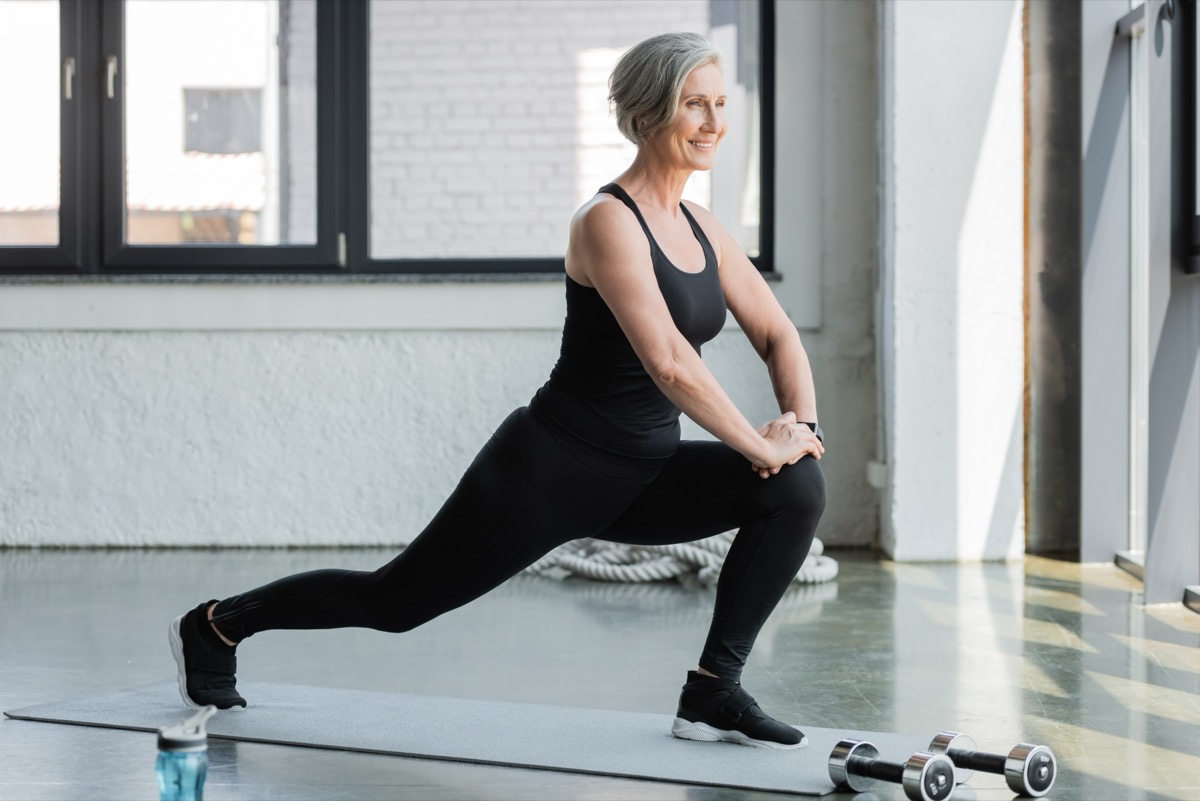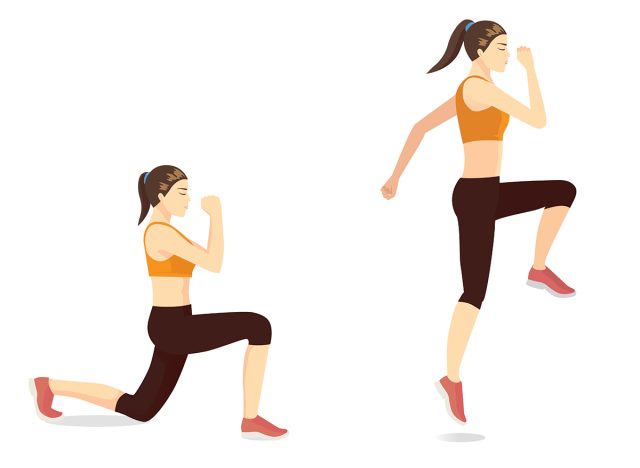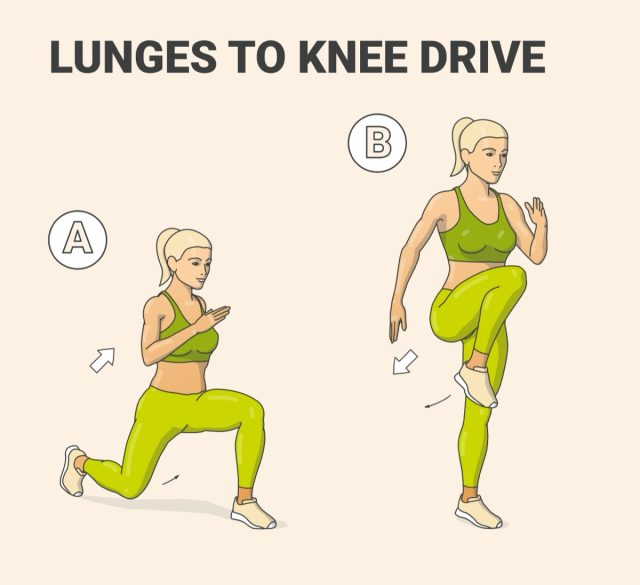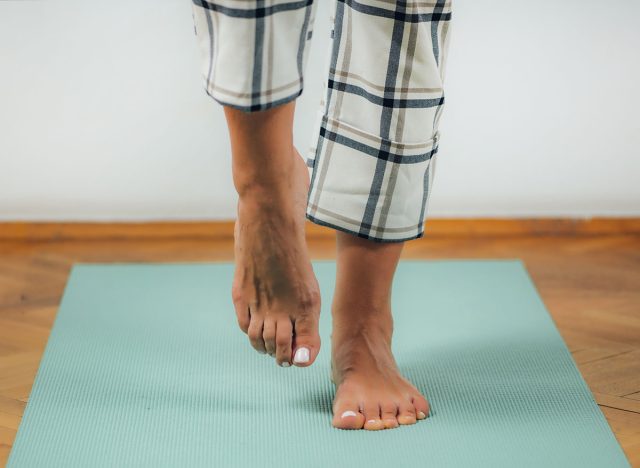If You Can Master This Simple Movement at 50+, You’re More Mobile Than Most People Your Age

Mobility, especially when discussing dynamic movement, is about how well your body can move through space with control, balance, and purpose. After the age of 50, mobility becomes one of the most important components of your overall fitness. It determines how well you move, how strong you feel, and how resilient your body is during both everyday tasks and workouts.
One of the best ways to measure your mobility is with a movement that appears simple on the surface but reveals a great deal about your balance, coordination, joint health, and lower-body strength. That movement is the Reverse Lunge to Knee Drive. This drill shows you how well your hips, knees, ankles, and core work together. It’s not just a mobility test. It’s a mobility builder.
When you can lower your body into a controlled reverse lunge and then drive explosively back to a stable single-leg balance position, you’re doing more than just a bodyweight exercise. You’re demonstrating coordination, strength, control, and power. You’re also reducing your risk of injury, improving your ability to walk, climb stairs, and even run.
Ready to test your movement? Here’s how to master this drill and what it says about the way your body moves.
Performing the Reverse Lunge to Knee Drive

This is a unilateral compound movement that challenges the strength and mobility of each leg independently. It builds coordination, balance, and control in real time, unlike most bilateral leg exercises where both legs share the load. The reverse lunge promotes hip mobility and knee stability, while the knee drive adds a dynamic power element that mimics real-life movement patterns, such as walking, running, or climbing. It also forces your core to stay active and responsive, especially during the transition from the lunge to the drive.
This one movement combines mobility, strength, balance, coordination, and power. That’s a rare combination.
Muscles Trained: Glutes, quads, hamstrings, hip flexors, calves, core
How to Do It
- Stand tall with your feet hip-width apart and arms at your sides.
- Step your right foot back into a lunge, lowering until your back knee hovers just above the floor.
- Keep your front foot flat and your chest tall as you lower into the lunge.
- Press through your front heel and drive your back knee forward and up toward your chest.
- Pause briefly at the top with balance before stepping back into the next lunge.
- Perform all reps on one side, then switch legs.
Recommended Sets and Reps: Knock out 3 sets of 6 to 10 reps per leg. Rest for 45 to 60 seconds between each set.
Best Variations
- Hands Overhead Reverse Lunge to Knee Drive: Challenges your balance and adds a shoulder mobility component.
- Weighted Reverse Lunge to Knee Drive: Hold dumbbells or a kettlebell to increase resistance and demand on your core.
- Slow Eccentric Reverse Lunge: Add a 3- to 5-second descent to improve control and mobility in the hips and knees.
- Box Reverse Lunge to Knee Drive: Step off a low box or platform to increase the range of motion and strengthen through deeper positions.
Form Tip: Keep your eyes focused straight ahead and engage your core before stepping back. This improves balance and prevents your torso from tipping or twisting.
What This Movement Says About Your Mobility

The reverse lunge to knee drive looks simple, but it quickly exposes your limitations. Struggle with balance? You’ll wobble at the top. Tight hips or ankles? Your lunge will feel shallow or unstable. Weak glutes or poor core control? You’ll collapse forward or lose your posture.
This movement reveals how well your lower body moves as an integrated unit. It checks hip mobility, ankle flexibility, knee stability, and core strength—all in one fluid motion. When transitioning from the lunge to the knee drive, your body must absorb force, generate power, and stabilize under load. That’s the exact type of control that carries over into everyday movement and athletic performance.
If you can perform this movement with control, fluidity, and strength, it means your joints are moving smoothly, your muscles are firing in the correct sequence, and your nervous system is functioning correctly. That’s a significant win for your long-term mobility and function.
Optimal Tips for Improving Mobility and Balance Past 50

Mobility and balance aren’t just things you lose with age—they’re also things you can actively train, improve, and maintain. Focusing on these areas becomes even more crucial after the age of 50. Strong mobility means fewer injuries, better movement, and more independence. And improved balance protects you from falls, keeps your joints healthy, and boosts confidence in everyday movement.
Use the tips below to move and feel better every decade of life:
- Train on One Leg: Add lunges, step-ups, and balance holds to your workouts. They strengthen stabilizers, correct imbalances, and boost coordination.
- Go Barefoot More Often: Spend time barefoot or in minimal shoes to strengthen your feet and improve balance. Start with warm-ups or walks around the house.
- Make Mobility Part of Your Warm-Up: Use dynamic drills like leg swings, deep squat holds, and shoulder rolls to prep joints and increase range of motion before training.
- Train Your Core the Right Way: Combine anti-rotation exercises (such as planks and bird dogs) with rotation exercises (like thoracic twists) to develop core control that supports balance and posture.
- Practice Balance Daily: Stand on one leg while brushing your teeth or perform simple moves like toe taps without support. Little challenges build lasting stability.
- Stretch and Strengthen Together: Stretch tight areas, but follow up with strength work. For example, stretch your hips, then activate your glutes with bridges or band walks.
- Stay Consistent: You don’t need hour-long routines. Five to ten minutes of daily mobility work goes a long way when done consistently.